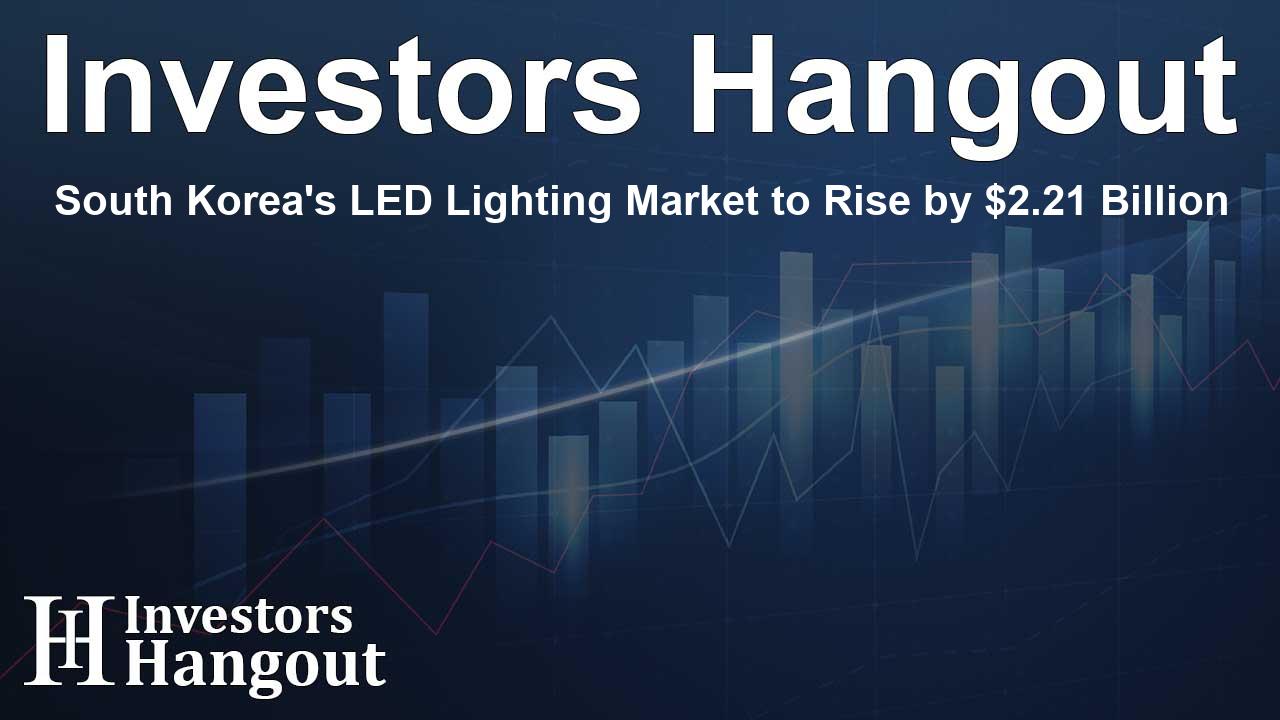South Korea's LED Lighting Market to Rise by $2.21 Billion

South Korea's LED Lighting Market Growth Forecast
The LED lighting market in South Korea is on a remarkable upward trajectory, projected to grow by USD 2.21 billion during the forecast period from 2024 to 2028. This exciting growth is fueled by the rising demand for LED solutions, particularly in hazardous environments, coupled with advances in artificial intelligence driving market transformations. The anticipated compound annual growth rate (CAGR) of 8.09% underlines the significant interest and investment in this sector.
Market Dynamics and Key Trends
A significant component of this growth is the increasing need for energy-efficient lighting. LEDs, which utilize semiconductor technology, have effectively replaced traditional incandescent and fluorescent lamps due to their longer lifespan, lower energy consumption, and environmental benefits such as being mercury-free. This shift is important across numerous applications including residential, commercial, and industrial sectors, as well as outdoor lighting in urban areas.
Innovations in Smart Lighting
The integration of smart lighting systems is another trend contributing to the market expansion. These systems adapt to different environments, particularly in office settings, offering features like dimming and color adjustments that create an engaging atmosphere while optimizing energy usage. Smart LED bulbs, which can be controlled via mobile applications, enhance user convenience and promote energy conservation.
Challenges Facing the Market
Despite the promising growth, the South Korean LED lighting market faces challenges. The initial costs associated with transitioning to LED technology can deter some end-users, especially where traditional lighting sources remain cheaper. Moreover, the complexity of LED installation processes, which often require intricate manual assembly, impacts the overall economics of implementation.
Environmental Benefits Driving Adoption
The environmental benefits of LEDs are a significant incentive for their adoption. By replacing traditional bulbs with energy-efficient lighting, households can drastically reduce energy consumption, leading to cost savings and decreased carbon emissions. As more urban areas develop smart cities, the alignment of energy efficiency with sustainability becomes increasingly favorable, solidifying the role of LEDs in future urban planning.
Segmentation of the Market
The market can be segmented into various applications, notably:
- Residential: This segment is expected to show remarkable growth as urban populations rise and consumers seek modern, energy-efficient solutions in their homes.
- Commercial: Businesses are embracing LED technology to cut costs and meet sustainability goals.
- Outdoor: Street and roadway lighting are rapidly transitioning to LED systems for enhanced visibility and energy efficiency.
The diversity in applications illustrates the wide-reaching impact of LED technology on modern lighting solutions.
AI’s Role in Market Advancement
AI technology plays a pivotal role in the ongoing transformation of the LED lighting market. It enhances lighting control systems, optimizes energy usage, and contributes to intelligent lighting solutions that meet the dynamic needs of users. The convergence of AI and LED technology not only streamlines operations but also provides opportunities for new innovations in the sector.
Frequently Asked Questions
What is the projected growth of the LED lighting market in South Korea?
The market is projected to grow by USD 2.21 billion from 2024 to 2028, indicating a significant upward trend.
What factors are driving this market growth?
Increasing demand for energy-efficient lighting and advancements in AI technology are primary drivers of growth in the LED lighting market.
What challenges does the market face?
Challenges include high initial costs for LED installation and competition from cheaper traditional lighting options.
How does LED technology benefit the environment?
LEDs are energy-efficient, have a longer lifespan, and do not contain harmful substances like mercury, making them a more sustainable choice.
How is AI affecting the lighting industry?
AI enhances lighting control systems, improves energy efficiency, and fosters innovative solutions for smart lighting applications.
About Investors Hangout
Investors Hangout is a leading online stock forum for financial discussion and learning, offering a wide range of free tools and resources. It draws in traders of all levels, who exchange market knowledge, investigate trading tactics, and keep an eye on industry developments in real time. Featuring financial articles, stock message boards, quotes, charts, company profiles, and live news updates. Through cooperative learning and a wealth of informational resources, it helps users from novices creating their first portfolios to experts honing their techniques. Join Investors Hangout today: https://investorshangout.com/
Disclaimer: The content of this article is solely for general informational purposes only; it does not represent legal, financial, or investment advice. Investors Hangout does not offer financial advice; the author is not a licensed financial advisor. Consult a qualified advisor before making any financial or investment decisions based on this article. The author's interpretation of publicly available data shapes the opinions presented here; as a result, they should not be taken as advice to purchase, sell, or hold any securities mentioned or any other investments. The author does not guarantee the accuracy, completeness, or timeliness of any material, providing it "as is." Information and market conditions may change; past performance is not indicative of future outcomes. If any of the material offered here is inaccurate, please contact us for corrections.